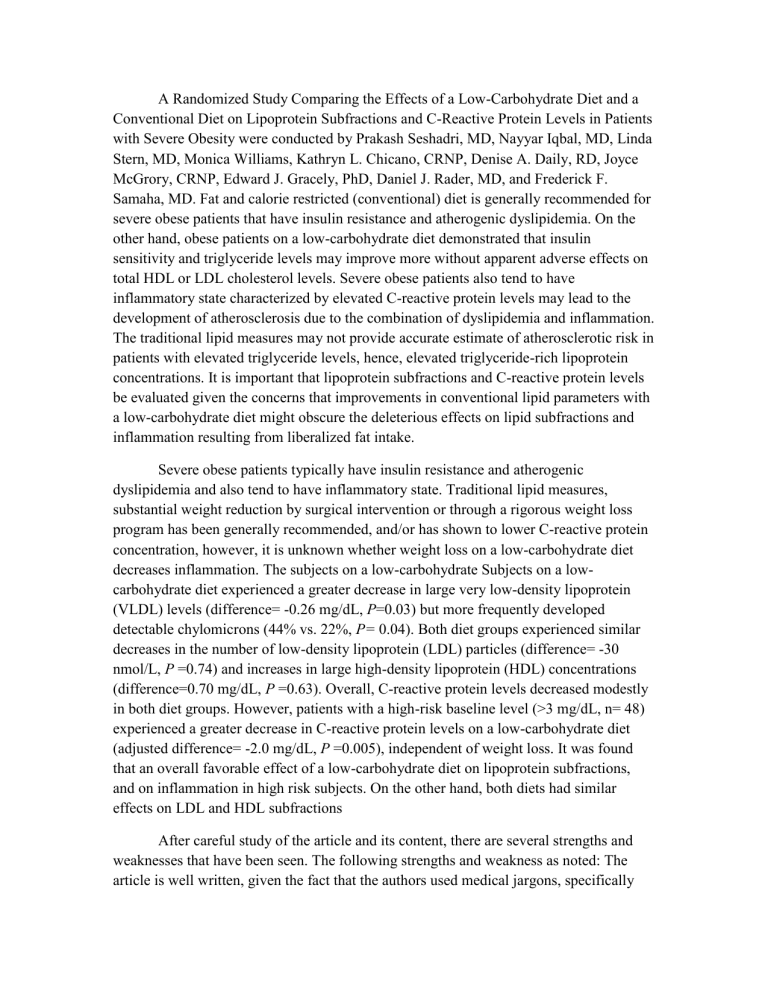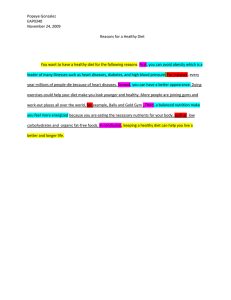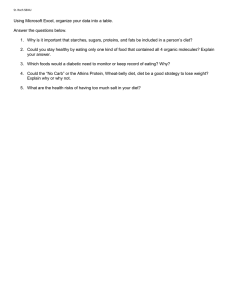
A Randomized Study Comparing the Effects of a Low-Carbohydrate Diet and a Conventional Diet on Lipoprotein Subfractions and C-Reactive Protein Levels in Patients with Severe Obesity were conducted by Prakash Seshadri, MD, Nayyar Iqbal, MD, Linda Stern, MD, Monica Williams, Kathryn L. Chicano, CRNP, Denise A. Daily, RD, Joyce McGrory, CRNP, Edward J. Gracely, PhD, Daniel J. Rader, MD, and Frederick F. Samaha, MD. Fat and calorie restricted (conventional) diet is generally recommended for severe obese patients that have insulin resistance and atherogenic dyslipidemia. On the other hand, obese patients on a low-carbohydrate diet demonstrated that insulin sensitivity and triglyceride levels may improve more without apparent adverse effects on total HDL or LDL cholesterol levels. Severe obese patients also tend to have inflammatory state characterized by elevated C-reactive protein levels may lead to the development of atherosclerosis due to the combination of dyslipidemia and inflammation. The traditional lipid measures may not provide accurate estimate of atherosclerotic risk in patients with elevated triglyceride levels, hence, elevated triglyceride-rich lipoprotein concentrations. It is important that lipoprotein subfractions and C-reactive protein levels be evaluated given the concerns that improvements in conventional lipid parameters with a low-carbohydrate diet might obscure the deleterious effects on lipid subfractions and inflammation resulting from liberalized fat intake. Severe obese patients typically have insulin resistance and atherogenic dyslipidemia and also tend to have inflammatory state. Traditional lipid measures, substantial weight reduction by surgical intervention or through a rigorous weight loss program has been generally recommended, and/or has shown to lower C-reactive protein concentration, however, it is unknown whether weight loss on a low-carbohydrate diet decreases inflammation. The subjects on a low-carbohydrate Subjects on a lowcarbohydrate diet experienced a greater decrease in large very low-density lipoprotein (VLDL) levels (difference= -0.26 mg/dL, P=0.03) but more frequently developed detectable chylomicrons (44% vs. 22%, P= 0.04). Both diet groups experienced similar decreases in the number of low-density lipoprotein (LDL) particles (difference= -30 nmol/L, P =0.74) and increases in large high-density lipoprotein (HDL) concentrations (difference=0.70 mg/dL, P =0.63). Overall, C-reactive protein levels decreased modestly in both diet groups. However, patients with a high-risk baseline level (>3 mg/dL, n= 48) experienced a greater decrease in C-reactive protein levels on a low-carbohydrate diet (adjusted difference= -2.0 mg/dL, P =0.005), independent of weight loss. It was found that an overall favorable effect of a low-carbohydrate diet on lipoprotein subfractions, and on inflammation in high risk subjects. On the other hand, both diets had similar effects on LDL and HDL subfractions After careful study of the article and its content, there are several strengths and weaknesses that have been seen. The following strengths and weakness as noted: The article is well written, given the fact that the authors used medical jargons, specifically for doctors and other health-related profession to understand the research at hand. But some terms were not even medical jargons, such as “blinded fashion” which is not written in the dictionary, but is similar to blind experiment. The degree of knowledge concerning the effects of low-carbohydrate diet and a conventional diet on lipoprotein subfractions and C-Reactive protein levels in patients with Severe obesity conducted, was backed up by relevant and original researches from the sources stated in their article. The use of certain laboratory methods such as the SR Scales, Friedewald formula to name a few, are standard methods used from the past and still in use until today. The principle behind each method was not further elaborated but citations were written alongside each to prevent insignificance to the main purpose of the study. The methods above, much like the Friedewald formula, had undergone numerous researches, and is still in use. The use of random population was a good strategy considering assigning the population to either low-carbohydrate diet or conventional diet, to assess carefully their respective effects. Given the time of 6 months to conduct that research, the data acquired was achieved, thus, the results showed a clear comparison of the effects of low-carbohydrate and conventional diets. The findings were concise and clear, the research overall gave a clear conclusion, but there needs to be further studies to evaluate metabolic effects affecting long-term cardiovascular outcomes. The books and journals alluded in the study was accurately referenced, making it a good source of further reading on what the study would like to have as a result. To conclude the article, it gave a substantial amount of data and included some helpful graphic illustrations and formulas to prove the target reader a well conducted study. Evident from succinct statements in the article, these article was written with pertinent researchers and defended by multiple credible sources. The authors sums the article up well and discusses in detail that a low-carbohydrate diet have a more beneficial effect on large VLDL concentration and inflammation in high-risk subjects, but with an increased presence of chylomicrons, as compared with a conventional diet. Both diets had similar beneficial effects on LDL and HDL subfractions. It is a good concept writing it straightforward showing the important information on the head of the first page before the introduction in order to have a more people be engaged and read the whole article. The piece, when taken as a whole is relevant and very convincing in theory but only some terms were not clearly stated.



